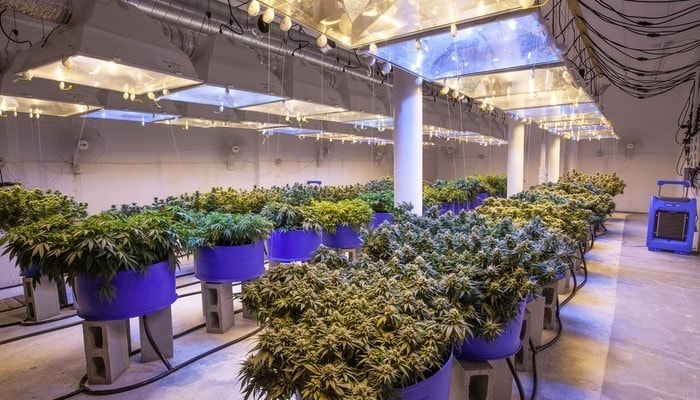As the global landscape shifts towards sustainable and versatile crops, industrial hemp emerges as a frontrunner in 2023. Its myriad applications, from textiles to nutrition, have sparked a revolution in processing methodologies. This guide delves into the latest advancements and innovations in industrial hemp processing equipment, ensuring producers remain at the forefront of this booming industry.
The passing of the 2018 Farm Bill legalized hemp and hemp-derived products under federal law in the United States. The removal of hemp from Schedule I of the Controlled Substances Act has helped fade the stigma that has long surrounded cannabis and hemp. The result is an increasingly booming hemp trade with an industrial market that is predicted to reach $13 billion by 2026, making growing industrial hemp a highly lucrative industry.
What Is Industrial Hemp Processing Equipment?
Industrial hemp, also known as non-psychoactive hemp, refers to the cannabis sativa plant that is grown specifically for industrial use. It should not be confused with psychoactive marijuana. Industrial hemp focuses on the use of the hemp plant material, which is composed of the stalk, seeds, and leaves of the plant and marketed as a seed, fiber, or dual-purpose crop.
Because hemp is a versatile plant, it has a multitude of applications that range from clothing and beauty products to building materials and biofuel. Other potential uses continue to be discovered and developed.
For the industry to flourish, processing technology is essential to result in high-value-added products. That’s why, in most cases, you need to use a custom conveyor belt for food in order to get the best possible results.

The Best Processing Environments for Hemp Products
Hemp farming equipment can take a single acre to yield approximately 700 lbs of grain or produce 5,300 lbs of straw on average. That same straw can be transformed into about 1,300 lbs of fiber. For the best results, you need to have the best processing environment in your facilities. Let’s check out which conditions are needed to yield optimal results:
- Optimal harvest – For the industrial hemp farming cycle and cultivation process to go as expected and yield an optimal harvest, growing conditions on hemp farms must remain stable and free from pests and diseases. While the plant can grow in a wide variety of soils, it tends to thrive on nitrogen-rich land that is non-acidic. This type of land is also ideal for growing corn.
- Soil fertility – Soil tests to evaluate soil fertility and determine nutrient management are necessary for hemp cultivation. The plant also prefers milder climatic conditions with a humid atmosphere. It does, however, need at least 20-30 inches of rainfall during its growing cycle, and its demand for water increases until flowering begins.
- Climate control – The raw materials need to be protected from direct sunlight, extreme temperatures, and high levels of oxygen. To achieve this, hemp processing plants should be climate-controlled, adequately ventilated, and regulated for moisture. The processing equipment should be designed to limit exposure to the elements, which can introduce dust and other contaminants.
The Different Uses and Processing of Industrial Hemp
From the roots to the leaves, each component of the hemp plant can be processed and made into an industrial hemp product. Therefore, the harvesting and processing methods depend on the intended application. This being said, let’s explain each component separately:
Stalk
The stalk is one of hemp’s most versatile components of the plant. It can be used to make rope, paper, insulation, building materials, and animal bedding. The stalk’s bast fibers are used to make hemp textiles, and they can be blended with other fibers. CBD extracts also come from the plant’s stalks and stems through the process of CBD isolation.
Flowers
The hemp flowers and buds can be used to extract seed oil. Hemp oil comes directly from the seeds in the plant’s flowers. The seeds can be used on their own in a variety of ways. The seeds are touted as a superfood and can typically be found in health food stores today.
Waste
If a hemp product manufacturer only needs to harvest the plant for its flowers and seeds, the remaining stalks and leaves will be regarded as waste. However, this biomass can be used by other manufacturers to make fibers, cloths, or cords. The stalks can be fermented and turned into hemp ethanol or biofuel.
All of the hemp’s components will go through different stages of cleaning and drying. The plant’s stalks will undergo decortication and retting processes. To acquire the seeds, buds, flowers, and leaves will undergo bucking and dehulling. Bucking, also known as de-budding or destemming, refers to the process of removing the flower and leaves from the plant’s stem.
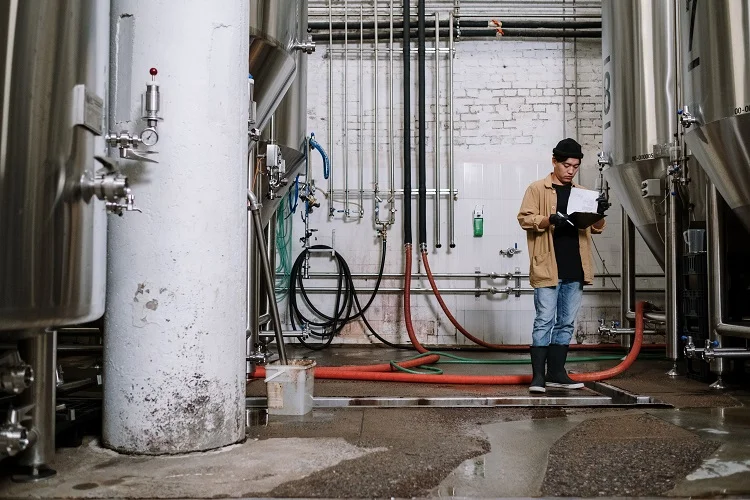
Processing for the Hemp Plant’s Flowers and Seeds
Getting the timing right to harvest for seed production can be tricky because seeds mature at varying rates, with different seeds maturing at different times on the same plant. Sometimes, the lower seeds near the stalk will have already matured and split open, while the seeds at the top aren’t quite ready.
The challenge of hemp harvesting is to do it when there is the least risk of losing seeds and not being able to actually put them into the conveyor belt system. Premature harvesting will only result in non-viable seeds. So, here are some of the steps you need to take and not risk anything:
Careful Handling of the Hemp Seeds
This part is crucial and requires the removal of the mature seeds from the flower heads. Because whole hemp seeds have hard outer shells, dehulling is required to get them ready for the market. Historically, the dehulling of seeds was done manually, making shelling hemp seeds a long and labor-intensive process.
Using the Right Hemp Farm Equipment
Bucking machines, which are also referred to as destemmers or debudders, speed up the industrial hemp production process. The flowering head of the plant is cut for seed processing, while the stalks are sorted for fiber processing. While some hemp processors may take untrimmed material to process as is, others will use the material to produce other hemp-based products, such as oils or distillates.
Preparing Seeds Adequately for Storage
Before storage, hemp seeds need to be properly cleaned and dried. To prevent damage, low-impact transfer mechanisms, such as a tubular conveyor belt for a warehouse, are used to transfer the seeds. Other types of machinery, such as augers that run at high speeds, could potentially damage the seeds. Those traditional methods, which also include bucket elevators, tend to place more importance on speedy outputs than maintaining the material’s integrity.
Processing for the Hemp Plant’s Stalks
Harvesting for fiber production usually begins when plants are in early bloom. Historically, harvesting was done manually by farmers to ensure the stalks would not be damaged. The core of the hurd is separated from the fiber by hand. Because of the fiber’s strength, pulling it from the stalks took a lot of manual force.
Today, technology allows hemp crop harvesting and processing to be done by machines with equipment that is advanced enough to take care of the careful separation of the hemp fiber from the stalk. An excellent example is the belt conveyor system.
Decortication or Retting – What Separating Approach Is More Suitable?
There are two approaches to separating the hemp bast fiber from the woody core of the plant called the hurd. This can be done mechanically through decortication or by the retting process. This bast fiber of the stalk is what is often turned into industrial products like rope, canvas, textiles, and clothing.
Retting is crucial for ensuring the quality of the fiber produced. It refers to the process of separating the fiber from the rest of the plant. The quality can be quite complex as it requires breaking down the bark tissue that binds the fiber. That is why the retted fiber must be dried to 10-15% moisture before the hemp can be processed.
When it comes to decortication, after it, the fiber is scutched and hacked. Scutching refers to the dressing of the hemp in preparation for spinning. The process separates the impurities from the raw material, such as seed particles and other matter. Scutching was once done by hand, but it is now done by a machine called a scutcher. Scutching hemp results in long fibers called lines. Hackling or combing removes the hurd particles and any broken fibers and helps align the fibers in a continuous sliver.

The Best Equipment to Process Hemp Fiber
During the bucking phase, the best destemming equipment will not pull or pop the delicate flowers but rather cut them gently off the stem. When they are cut in this manner, there’s a minimal risk that the large crown buds will fall apart into small pieces. The goal is to keep the structure of the buds intact and fully preserved. Here’s how to do it:
A Good Decorticator System
Because hemp decortication makes up the bulk of the hemp fiber processing requirements, manufacturers need cutting-edge technology that streamlines the decortication process. A good decorticator system uses a reactor to pass stalks through the machine, efficiently separating them into pulp. Highly efficient decorticators can process tons of hemp per hour, and they are designed to process and decorticate the plant into a variety of different products.
A Modern Decorticator System
A modern decorticator separates the fiber from the rest of the stem and uses post-processing to remove the fiber’s resins and gums. A hammermill is used to separate the plant’s head from the bast fiber. The bast fiber is then cleaned, carded, refined, and cut to size. Once ready, the fibers can then be pressed tightly and prepared for baling. Processed fibers arrive at hemp product manufacturing facilities packaged in compressed bales similar to hay.
A Pellet Mill Systems
The hemp straw or stalk can also be used to make pellets. To do that, manufacturers use a pelletizer machine similar to the one used to make grass pellets. Hemp pellet mill systems should be paired with a suitable conveyance and transporting system to maintain the integrity and temperature of the pellets.
Processing Hemp Seeds: Essential Equipment and Techniques
Hemp seed processing requires precision. One of the pivotal steps is the dehulling process, which employs a dedicated hemp seed shelling machine to strip away the outer shell. This equipment comprises an input hopper, a spiral elevator, and a unit for dehulling and separating. It also boasts a back-flow material device and kernel collector.
Impressively, it not only strips the seed of its protective skin but ensures the kernel is clean from any residual hull. The vibrant de-separator within ensures seeds are parted from their kernels. Once separated, shells are effortlessly discharged, while any back-flow materials undergo another round of dehulling.
Straight Combining for Seed Harvest
Many hemp cultivators favor straight combining for seed harvest. Here, the combined header strategically positions just beneath the seed head to curtail fiber contamination. Hemp seeds, fragile by nature, necessitate cautious handling throughout their journey from the combine to the dryer, bin, cleaner, de-huller, and, ultimately, the processor. Enter the gentle conveyor system, the unsung hero safeguarding the seeds from damage, especially given their susceptibility to bursting, which can attract germs or induce rancidity.
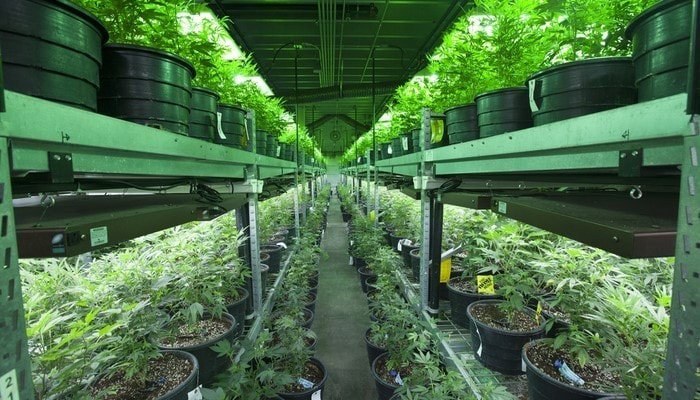
Maintain Product’s Blend Precision
For maintaining product blend precision, the tubular drag conveyor, often termed tubular drag cable and disc conveyors, is unparalleled, especially for processing hemp pellets and derivatives. Conventional equipment like screw augers and belt conveyors often compromise consistency due to inadequate inlet designs or excessive speeds, leading to material degradation. Furthermore, they’re vulnerable to ambient variables like temperature fluctuations and friction, jeopardizing material integrity.
However, tubular drag conveyor systems gracefully transport a myriad of delicate materials, hemp included, safeguarding integral plant components such as seeds and fibers. These systems stand out with their modular blueprint, flaunting an array of tube sizes and materials, catering to diverse requirements.
How Exactly Does This Work?
Delving into their mechanics, tubular drag conveyor technology integrates conveyance tubes, accompanied by cables and discs at regular intervals, ensuring gentle material handling within a sealed tube environment.
These systems predominantly incorporate stainless-steel tubes partnered with nylon or UHMW discs anchored to a stainless-steel cable. Powered by top-positioned drive units and steered by non-intrusive sprockets, these conveyors function at a leisurely pace of approximately 100 feet per minute, ensuring the material transition from infeed to discharge is seamless and gentle.
Does Traditional Equipment Have Some Drawbacks?
The problem with traditional equipment like screw augers, bucket elevators, pneumatic conveyor systems, belt conveyors, and vacuum conveyors is that they’re not ideal for maintaining consistency. When these conveyors have poor inlet designs or high conveyor speeds, materials may degrade, separate, or break. These methods are also susceptible to temperature changes, friction, and heat, which can threaten the integrity of the material.
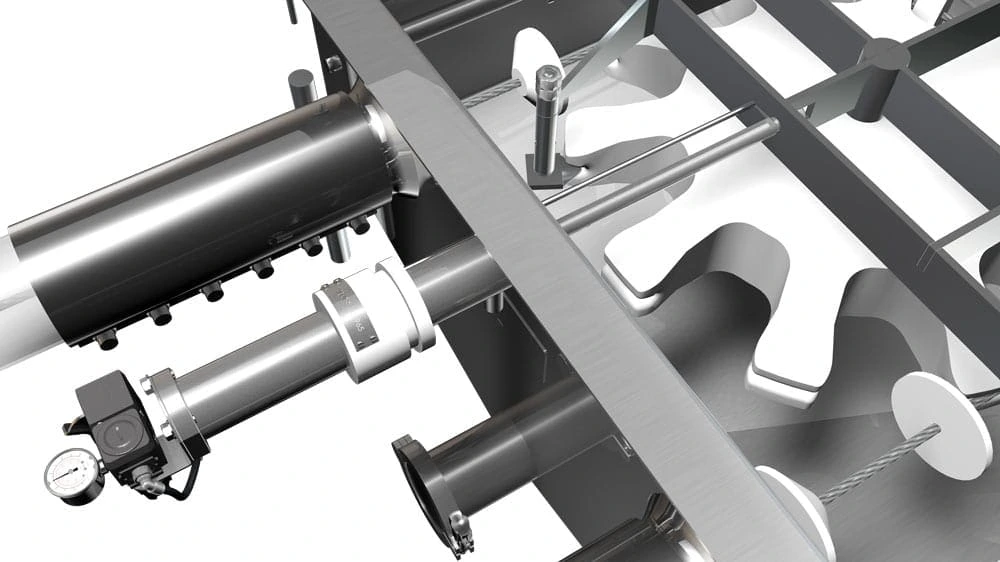
Utilizing Tubular Drag Conveyors Technologies
Tubular drag conveyor systems can efficiently move many types of delicate materials, including hemp while keeping the plant parts like seed and fiber intact. The right tube systems will feature a modular design with a wide range of tube diameters and materials that can accommodate diverse applications.
Tubular drag conveyor technologies feature an innovative combination of conveyance tubes with cables and discs attached at set intervals that gently handle materials from an inlet within an enclosed tube.
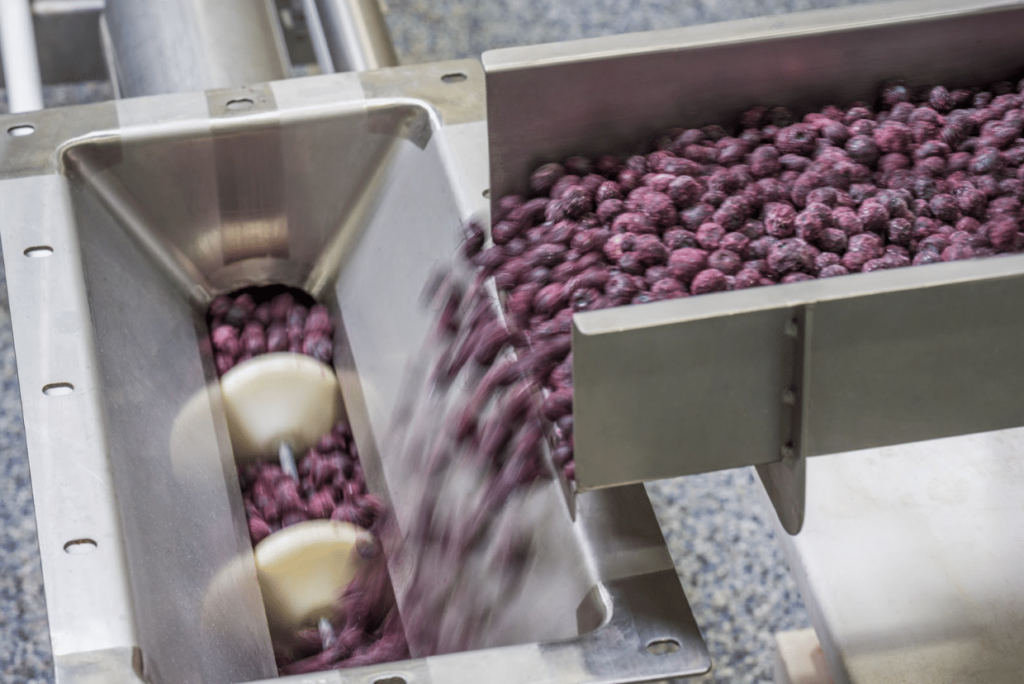
How to Maintain Quality in Hemp Processing?
When the 2018 Farm Bill was signed into law, it designated the Agricultural Marketing Service (AMS) to lead the USDA Hemp Production Program. The farm bureau, hemp association, and other regulating bodies will ensure hemp producers operate their industrial hemp programs according to their individual plans and in compliance with federal laws, including following rules and guidelines for food processing and marketing to maintain quality control and food safety.
Ensuring the Highest Quality Hemp Products Starts Post-harvest During the Drying Phase
When hemp is dried quickly and cleaned, there is less risk of damage and loss of product. When it is not dried quickly enough or is harvested too wet, it can become contaminated with bacteria or fungi. Without adequate ventilation, the harvest may spoil, making it unsuitable for processing.
To yield the highest quality hemp seeds and fibers, gentle conveyance of materials is crucial. Cable conveyor and tubular drag conveyor systems are the gentle, clean, and cost-effective way to move materials around your production facility.
The Processing Environment Should Also Be Dust- And Contamination-Free to Maintain the Quality
When choosing conveyance solutions, find tube conveyors that are designed to eliminate places where fine particles may accumulate. Discs should be solid and have no screws or bolts, and cables should be “jacketed” with nylon casings. Steel connectors should also be made of stainless steel. And for easy cleaning, all the equipment should be removable or able to be cleaned in place (CIP).
Always Choose Enclosed Tubes for Bulk Material Handling
The enclosed tube keeps materials clean and safe while in transit, reduces waste, and keeps the facility clean. It is also gentle enough to convey delicate hemp materials without breaking them. This smooth and gentle conveying system helps reduce waste by preventing degradation, material damage, and contamination.
Get the Best Bulk Material Handling Equipment
Success in the industrial hemp industry depends on how efficiently and safely your hemp materials move around your production and processing facility, ultimately determining the difference between profit and loss. That’s why the right tube conveyor system for your hemp processing facility should be modularly designed and customized for your site.Cablevey Conveyors can ensure that all of your systems are optimized with component parts that are the right size, tube diameter, and material to suit your facility’s unique configuration, available space, and specific applications. If you need more information about setting up our tubular conveyors, contact us right away, and our team will be happy to answer any questions you may have.

